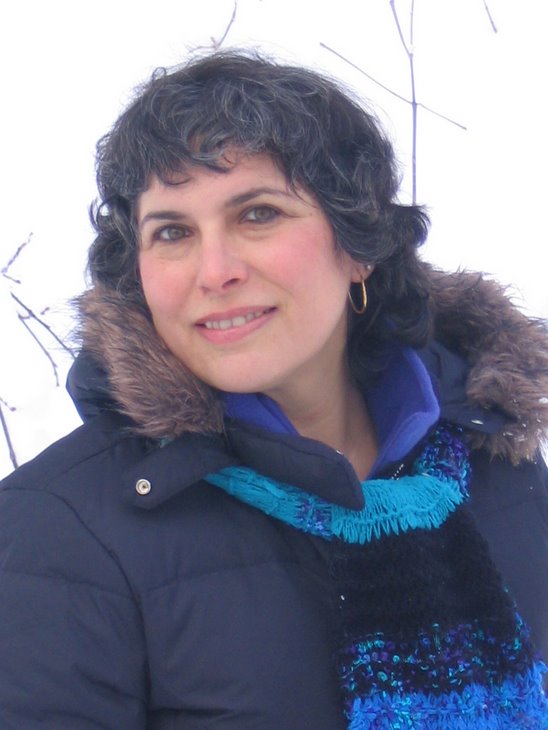Lovely Review in the Globe and Mail Saturday April 1st -- No Fooling!!
FICTION
Sonata for three
DVOIRA YANOVSKY
The Violin Lover
By Susan Glickman
Goose Lane, 250 pages, $22.95
In her first novel, The Violin Lover, Canadian poet Susan Glickman trains her clear eye upon the nature of, and conflicts between, art, domesticity and identity. Like its protagonist, Dr. Edward Abraham, The Violin Lover's passionate core is concealed -- but not obscured -- by a cool, elegant layer of observation. Each moment is captured in richly descriptive language, pure, poetic and precise. Not surprisingly, since Glickman is the author of five acclaimed poetry collections, including the recent Running in Prospect Cemetery (2004), in addition to a prize-winning volume of literary criticism. With The Violin Lover, she makes a seamless transition from poetry to prose.
Set in London, the novel begins in the autumn of 1934, concluding in spring, 1936. This brief year-and-a-half brings together Clara Weiss, an attractive young widow; Jacob, her 11-year-old son and a piano prodigy; and Edward, doctor, violinist and lover. A passion for music brings them together, but it is Clara and Ned's mutual passion that ultimately drives them apart.
Ned is the apex of this triangle. Both Clara and Jacob seek a fulfilment in him that is doomed. Jacob is searching for both a musical soulmate, for "they both possessed a spiritual hunger for which music was a form of sustenance," and a father figure, someone in whom "he found himself moving towards the kind of speculations he once shared with his father." Clara initially seeks a physical soulmate in Ned: "Their hunger was mutual and intemperate. . . . Clara had never experienced such urgency of desire before." But eventually, Clara, warm and loving, needs more than a sexual affair, but Clara and Jacob embody the twin horrors that Ned has, until now, scrupulously avoided: the fetters of domestic responsibility and his own Jewish identity.
Is domesticity inimical to artistic creation and personal autonomy? Ned and Clara's competing histories and needs illuminate the difficulties of creating timeless art -- for Ned, music, for Clara, painting -- while tied to temporal responsibilities. Abandoned by his rabble-rousing, anarchist father for the Bolshevik revolution, raised by a coldly distant mother, Ned has never experienced felicity in domestic relationships. Quoting a character from a Henry James short story -- "One has no business having any children if one wants to accomplish anything artistic" -- Ned resolutely follows that dictum with the freedom inherent in male privilege.
Clara, abandoning private fantasies of art school and travel, obediently follows the conventional path of marriage and children. Yet, despite her frustrated aspirations, she asserts: "Could any painting I might have made be as precious as my children are? Never! Of that I am sure." Ned and Clara's discord is never tritely polemical and Glickman takes no sides. They are creatures of their time and place.
And what a time and place to be Jewish. The quieter, more discreet melody of polite British anti-Semitism is now accompanied by the rising, crude ostinato of Hitler's terror and Britain's own fascist Black Shirts. Unlike Clara, Ned finds no strength or pride in his heritage. His Jewishness is an unredeemable history of loss and pain, of vulgar epithets ("sheeny") and Lucy Chadwick, "fresh as the dawn of Creation, fair hair knife-edged and shining," forbidden to him, a "shabby little Jew." Ultimately, Ned realizes that he hates being Jewish "because other people's contempt made him feel ashamed."
It is not just Clara's "relentless maternity" that disturbs Ned, nor Jacob's innocent admiration, but their Jewishness, a history "he had so fervently rejected." It threatens the identity Ned has constructed for himself: the cool sophisticate, the talented violinist, yearning to disappear into the café society of Vienna, his true mistress of "brilliant anonymous façades, the glitter of street-lamps on cobblestones." As their worlds collide, disaster seems inevitable.
Early in The Violin Lover, Jacob explains to his mother the sonata, a musical form generally used to structure the first movement of a composition from the classical 18th century to the 20th century. He explains the complex form with simplicity: "Happy, sad, happy -- major key, minor key, major key." But sometimes, the form is reversed. Dividing the novel into three parts, Glickman masterfully structures The Violin Lover in sonata form, mirroring and reflecting the musical and narrative themes that underpin the book. Part One, the exposition, introduces the thematic melodies of Clara, Jacob and Ned. In Part Two, the development, their melodies begin to intertwine as their relationships grow and deepen. In Part Three, the recapitulation, the melodies separate as they are agonizingly torn apart.
Glickman's mastery and maturity are evident in The Violin Lover. Its final moments are as moving and inevitable as the flow of music toward its conclusion. Readers will be richly rewarded by the beauty and power of her artistry.
Dvoira Yanovsky is a special education teacher and a book reviewer for Outlook magazine.man
Subscribe to:
Post Comments (Atom)



No comments:
Post a Comment